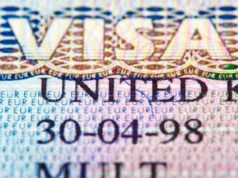
Are you a conditional resident of the United States looking to remove the conditions on your residence? If so, Form I-751, Petition to Remove Conditions on Residence, may be the necessary step in the process. This article will guide you through the purpose of Form I-751, who is eligible to file, the necessary documents to include, and what to expect during the application process.
What is Form I-751?
USCIS Form I-751, Petition to Remove Conditions on Residence, is the necessary form to file for those who were granted conditional status in the United States on their permanent residence and must now remove those conditions. Under certain circumstances, permanent residence status may be conditioned on the recipient’s marriage lasting two years. In such a case, Form I-751 must be filed jointly with the spouse.
Who is Eligible to File Form I-751?
To be eligible for filing Form I-751, the applicant must meet certain criteria. They must have been granted conditional resident status, have entered into the country as the spouse of a U.S. citizen or permanent resident, have entered as a child of someone with conditional status, or have been granted conditional status themselves through investment in a U.S. business.
Furthermore, those filing must still be married to the same spouse who is also required to file the petition, but if they are no longer married for certain reasons in the two-year conditional residence period, they may file alone. However, they must prove that they entered the marriage in good faith, regardless of what happened to end the marriage.
When to File Form I-751
It is important to file Form I-751 in a timely manner. The conditional resident is required to file within the 90-day period that falls before the two-year anniversary of the grant of satellite permanent residency. This form must be filed even if the conditional permanent resident has already separated or has initiated divorce proceedings.
Required Documents to File
When filing Form I-751, the conditional permanent resident or both parties, in the case of a joint application, must provide copies of the necessary supporting documents. These supporting documents include proof that a bona fide marriage or engagement was terminated through no fault of their own, and that the marriage was a good faith marriage based on love, trust, affection, and a continued commitment to a life together. Along with this, applicants must provide evidence of shared financial responsibilities, joint residency confirmation, photos of time spent together with friends and family, as well as any other documentation relevant to the relationship.
The Government’s Review Process
Once Form I-751 is filed, it is reviewed by USCIS. During this review process, the USCIS may request further evidence or clarification to support the claim that the marriage was entered into in good faith and not solely for the purpose of circumventing the immigration laws of the United States.
If there is insufficient evidence to make a decision, applicants will receive a Request for Evidence (RFE) letter. This letter affords applicants the opportunity to supplement an application to ensure its success. It is critical that all RFE’s are responded to promptly by providing the necessary information, documents, and specific evidence that the USCIS is requesting. If a response is not filed within a certain timeframe provided in the letter, USCIS may reject the petition.
Conditional Permanent Resident Status
While the USCIS reviews Form I-751, conditional residents are granted an extension of their conditional permanent residence status. The extension letter should be received within 90 days of submitting Form I-751. This letter is evidence that the applicant’s permanent residence has been extended, and should the review period extend beyond the initial two-year conditional status, the holder’s status remains intact and will serve to verify its validity.
Interview Process
There is no guarantee that an interview will be required after filing Form I-751. However, if an interview is deemed necessary, applicants will receive a notice informing them of the time and location. It’s important to verify that the necessary documents are brought and carefully review them prior to attending the interview. The interview will most likely involve questions regarding the marital relationship between the applicant and their spouse.
After the Interview
After the interview process, the USCIS will make a final decision on the application. If Form I-751 is approved, the conditions placed on the conditional resident permanent status will be removed. This approval depends on the level of evidence that was provided, the level of scrutiny that the application received, and whether the application was considered legitimate and entered in good faith.
If the application is denied, the conditional resident is given notice of the reasons for the denial and the opportunity to appeal the decision. The appeal process is the creation of new legal options to assert the individual’s rights in the US, and it is important to have an experienced immigration attorney advising on this process.
Conclusion
Obtaining permanent residency in the United States can be a complex process, but it is worth pursuing if it is vital to your future plans. Form I-751 is an integral step in the process for those who have been granted conditional residency and are looking to file for permanent residency. Make sure to provide all necessary documents and prove that the applicant’s relationship was entered in good faith to ensure that the USCIS can make a fair and quick determination. By following these guidelines and staying organized, one can navigate the process and achieve their goal of becoming a permanent resident of the United States.
How to Use Form I-751
Form I-751 is a government form from the United States Citizenship and Immigration Services for the Petition to Remove the Conditions of Residence. The purpose of Form I-751 is to give a conditional resident who got their status through the marriage of either a permanent resident or a United States citizen the opportunity apply to remove the conditions placed on his or her residence. After the petition is approved, the individual is given a 10-year permanent resident card.
Specifically, a Form I-751 is usually used by an individual who got a Green Card through marriage of a citizen or permanent resident and came to the United States on a K1 visa who most likely got a Conditional Permanent Resident card which was valid for two years. Once this conditional two-year period is up, the permanent residence status expires automatically and the applicant may be deported or removed from the country.
In order to avoid these actions, an applicant should file Form I-751 90 days or less before the expiration of the conditional residence. Once the condition is approved, the conditional status is then removed and the applicant will receive a Permanent Resident card that is then valid for ten years. Form I-751 should not be filed before the 90-day window because the application will be returned.
If still married, the applicant can file Form I-751 jointly with the spouse who is a United States citizen or permanent resident through whom the applicant obtained the conditional permanent status. If the applicant has any dependent children on the K-2 visa who also obtained their status for conditional permanent when they entered the United States within a 90-day period of the applicant’s arrival, their names and A-numbers can be included in Part 5 of the petition form.
If the children conditional statuses were obtained after the 90 day period from the applicant obtained or adjusted their status or in the case that the conditional permanent parent passes away, the children must file Form I-751 separately from the parent in order to remove the conditional status.
• If the applicant, the conditional permanent resident does not file jointly, he or she can file for a waiver, assuming:
• The applicant can show that proof of entering the marriage with good intentions and honesty, but the spouse subsequently passed away.
• The applicant entered the marriage in good faith, but the marriage resulted in an annulment or divorce.
• The applicant entered the marriage in good faith and is still married, but the applicant has subjected to cruelty or has been battered by the United States citizen or permanent resident spouse or the termination of the status and removal from the country would result in some sort of extreme hardship.
In circumstances where an applicant requests a waiver, proof is very important.
A complete application should include the following:
• A signed and completed Form I-751.
• A front and back copy of the applicant’s Conditional Green Card
• Two passport-style photographs for the applicant as well as any children on the application.
• Form FD-258 for two completed fingerprint cards for the applicant and any children on the application.
• Evidence of a bonafide marriage entered in good faith and honesty, such as birth certificates of children born In the marriage, joint assets, sworn statements of at last two people, mortgage or lease contracts showing joint occupancy.
• Filing Fee.





























